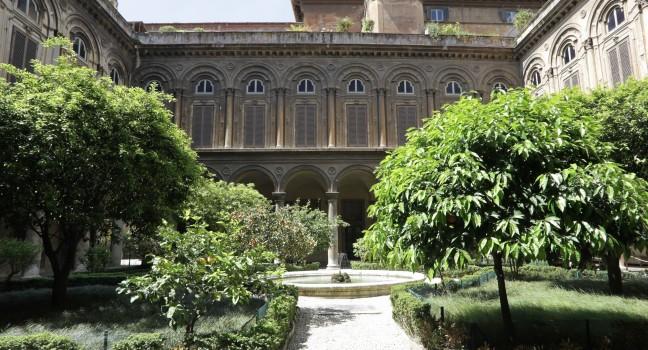Palazzo Colonna
Rome's grandest private palace is a fusion of 17th- and 18th-century buildings that have been occupied by the Colonna family for more than 20 generations. The immense residence faces Piazza dei Santi Apostoli on one side and the Quirinale (Quirinal Hill) on the other—with a little bridge over Via della Pilotta linking to gardens on the hill—and contains an art gallery that's open to the public on Saturday morning or by guided tour on Friday morning.
The gallery is itself a setting of aristocratic grandeur; you might recognize the Sala Grande as the site where Audrey Hepburn meets the press in Roman Holiday. An ancient red marble colonna (column), which is the family's emblem, looms at one end, but the most spectacular feature is the ceiling fresco of the Battle of Lepanto painted by Giovanni Coli and Filippo Gherardi beginning in 1675. Adding to the opulence are works by Poussin, Tintoretto, and Veronese, as well as portraits of illustrious members of the family, such as Vittoria Colonna, Michelangelo's muse and longtime friend.
It's worth paying an extra fee to take the guided, English-language gallery tour, which will help you navigate through the array of madonnas, saints, goddesses, popes, and cardinals to see Annibale Carracci's lonely Beaneater, spoon at the ready and front teeth missing. The gallery also has a café with a pleasant terrace.






